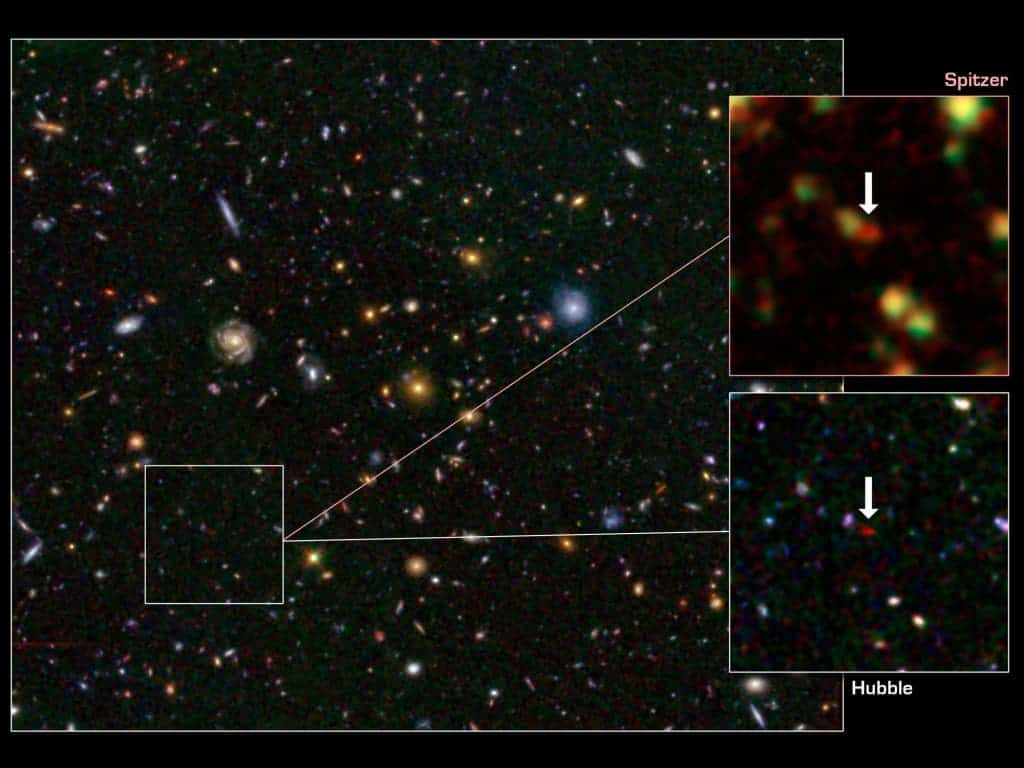An array formed by the greatest space telescopes in the world first discover, then photograph this ancient galaxy from the Universe’s dawn – the brightest such galaxy ever discovered by astronomers at such a distance. How far away you ask? Around 12,9 billion light years away, considering the Universe is estimated at 13.7 billion years old, this makes it quite an interesting study material for scientists.
Dubbed GN-108036, this ancient galaxy was first observed Japan’s Subaru telescope atop the volcano Mauna Kea in Hawaii, later confirmed by the Keck Observatory, which is also placed at the same location. The Spitzer and Hubble telescopes were then called upon to survey the target area and later returned with high-resolution photographs.

Visually, it’s not the most stunning cosmological sight we’ve featured on our blog, however, trust there’s much to this tiny red dot than meets the eye. Actually, this easily distinguishable color sparks interest in any astronomer whose eyes catch such a sight. Scientists can estimate how old a galaxy is by measuring how far apart its emitted light is stretched towards the red end of the light spectrum, known as the redshift. GN-108036 has a redshift of 7.2, a very hefty figure, as only a few objects known to man have a recorded redshift of over 7.
Age alone couldn’t had amaze scientists to such a degree, after all, there have been other much older galaxies observed. What’s intriguing about GN-108036 is that inside of it star formation takes place at an almost unprecedented pace, fact which makes for a rare event. Better said, however, is that GN-108036 used to have a furious star formation pace, since what we’re observing are fragments from 12.9 billion light years away. Certainly, this will help scientists better understand how star formation occurred during the early phase of the Universe.
via space


